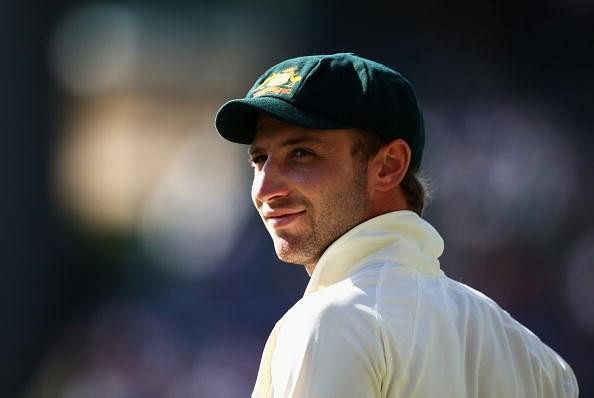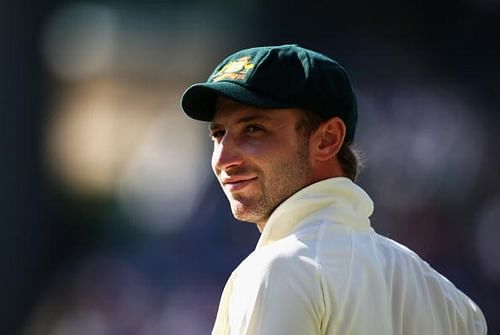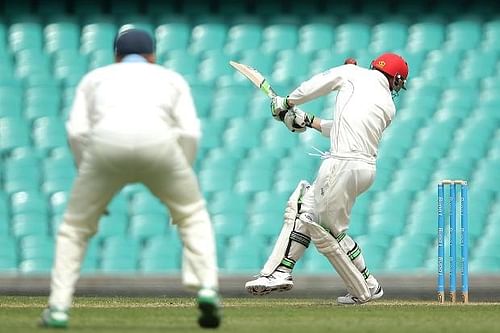
Phillip Hughes - A story of misfortune, tragedy and love

It's been a year.
It's really hard to believe that it has.
It seems like yesterday when he was around. Slashing balls through the point in his own unique way. Playing the most messed up, yet effective pull one could imagine. Scoring runs, getting out. You know, the things that normal cricketers do. It seems like yesterday that cricket was innocent, that it had not taken the life of a 25-year-old wearing all the protection that had ever been designed.
It seems like yesterday, but it's not. A year has passed. A year that Phillip Hughes could have should have seen. If only.
****
Phillip Hughes' story is very different, very unlike that of anyone else. It's a story as much about cricket as it is about him. It's a story as much about death as it is about life.
Hughes was a natural unnatural. There was a lot to his batting, the nuances of which can't be put down in words. Not by me, not by you, not by anyone.
There was a truckload of batting talent within him, which sometimes manifested itself in the most unwatchable forms ever. His legs often went one way, his hands and upper body, the other. A major technical glitch. For others, not for him. So much so that when they remained properly aligned, we wondered what was wrong with him.
His batting was messy, but it brought him runs and that's all that mattered. Until that day.
He made it to the Australian team at 20, for the tour to South Africa in 2009. A duck on debut was followed by twin centuries in his second Test. He was the new kid on the block. He was supposed to be the future star. He was destined for big things. Until that day.
Andrew Flintoff found him out in the Ashes that winter, converting what was Hughes' strength into his biggest nemesis. He was dropped after two Tests, and never really got a consistent run in the team after that.
Many thought that he would never touch the heights of his debut again. A lot of us believed he would. Until that day.
He was treated pathetically by the Australian selectors. They never gave him a rope long enough to adjust to the rigours of Test cricket. A couple of matches here and there was all he got. They converted the most prolific opener in Shield Cricket into an average middle order batsman. They toyed with him, they toyed with his career. And this has a lot to do with a Test average of just 32. Had.
There were occasional flashes of Hughes' brilliance as well, like a magnificent 126 at the SSC in Colombo in 2011, and a level headed 81 not out against England in what turned out to be his penultimate Test match at Trent Bridge in 2013.
But, for a man of such capability, of such a phenomenal first class record, his run scoring at the test level was well below par. We expected more from him. He expected much more from himself.
****
Three months before that fateful day, Hughes had been described by the Australian captain and best friend Michael Clarke as a 'hundred Test player'. Clarke said, that in spite of the unfair treatment being meted out to him by the selectors at that point of time, Hughes would go on to play a hundred Tests. He was sure. Until that day.
Opening the batting for Australia, instead of Hughes, was 37-year-old Chris Rogers. In the words of Cricket Australia, a stop gap arrangement. Until Hughes was ready. A week before that fateful day, Rogers was asked about his thoughts on Hughes. "He's a brilliant batsman. His time will surely come" Rogers said. Like Clarke, he was also sure. Until that day.
****

On 25 November 2014, South Australia were playing New South Wales in the Sheffield Shield at Sydney. It was supposed to be Hughes’ audition for a place in the Australian side to play India a week later, at the Gabba in Brisbane. Probably a second coming.
He had faced 162 balls, and was batting solidly on 63. Everything had gone to plan. He had, in all likelihood sealed his place in the team.
And then, it happened.
The 163rd ball became the last one he ever faced. It was the last time he was conscious. It was the last time he was.
A Sean Abbott bouncer had struck him on the back side of his head. A vein had burst. The doctors described it as a freak injury. One of only about hundred cases there ever had been.
As Hughes battled for his life in the ICU, prayers came in from all around the world. Twitter was flooded with messages giving strength and support to Hughes' family and close friends. Thoughts were also going to the young Abbott, who was experiencing something we couldn't even imagine.
With the number of prayers and the worldwide support Hughes was getting, we felt he would be fine. We knew that he would be fine. We were sure. Until that day.
****
27 November 2014. That day.
Hughes' last.
Almost as soon as I came to know about it, a strange sort of sadness engulfed me. It made me feel uneasy. It made me feel insecure. There was shock, there was disbelief. If words were coming out of my mouth, I would have shouted and cursed. But they weren't.
Above all, I felt a lot of pain. Pain of a very different kind. For a man who I admired and for the game I loved.
That pain is there. I still feel it.
Just like me, there are many others who still feel it.
****
What followed the week after, was probably more moving than anything one could imagine.
Twitter, home to the famous hashtags, to tribute to Hughes, carried out what started out as a simple movement, but ended being the most emotional one sport has seen. People from all around the world, cricketers, non-cricketers, everyone put out their bats, with a cap on top in memory of Hughes. For well over a week, #putyourbatsout was trending worldwide.
If ever an indication was needed to restore people's faith in humanity, this was it.
Then there were the New Zealanders, playing a Test in the UAE, who wore Hughes' initials on their shirts, didn't bowl a single bouncer, and refused to celebrate any of the wickets they took.
Clarke delivered an eulogy as tearful as they got. The nation, the world watched from their homes, community centres or cricket grounds. Mourning for one of their own, mourning for one of cricket's own.
The first Test between Australia and India, now shifted to Adelaide, saw Australian players wearing Hughes' Baggy Green number 408 on their shirts. The number was painted on the ground as well.
There was also a lot to do with the number 63, the score at which he ended. A 63-second silence before the match started. And Australian players looking up at the sky, looking up at him, whenever they crossed 63, apart from the fifties and hundreds.
David Warner did it twice. Steve Smith and Clarke, with a half gone back, once.
Those few days, our sport was at it's weakest. Those few days, our sport was probably at it's strongest.
His death almost broke cricket. It would have, had the world not come together to save it.
There was unconditional unity. A kind which is rarely seen. Sport has this quality. It unifies people. This was the best example there has been. This was the best example there ever will be.
****
There have been only a few whose death has had an impact on so many people, whose death has made so many people grieve. Out there, somewhere, Phillip Joel Hughes would look at this and smile back at us for all the love we gave him. He was just that kind of a person. You didn’t know him, but he gave you that feeling. He still does.
A recurring line during Clarke’s eulogy was Hughes’ often used mantra while batting - “Let’s dig in and get through to tea”. That day, Hughes dug in but couldn’t get through to tea. And he’ll never have a second chance.
****
This article could have been longer. It could have been happier. It could have been much more. So could Phillip Hughes' life. If only.